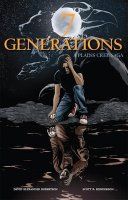In 2007, The Atlantic Policy Congress of First Nation Chiefs Secretariat issued a document that outlines the symbolism behind different spiritual traditions of the First Nations People. In simple terms, it explains the meaning behind: naming ceremonies, sunset and sunrise ceremonies, sacred medicines, medicine circles, talking circles, pow-wows, eagles, Elders, dance and so on. This could be a useful learning tool for students looking for definitions that are easy to understand.
The resource is also useful for educators looking to build their background knowledge before beginning a unit on indigenous culture. In our discussions during weeks 10 and 11, we took a look at mainstream teachers who are teaching in Northern remote communities. One of the ideas that came out of this discussion was the fact that many of these teachers feel il-equipped to transmit knowledge of indigenous culture and spirituality. This is also true for those teaching student populations outside the indigenous community. It can be challenging for teachers to impart indigenous spirituality, particularly if they themselves do not feel a strong sense of spirituality or connectedness with the natural environment. Without a teacher who values these concepts, it is difficult to inspire students. It is important that educators are enthusiastic about teaching indigenous studies. Although the afore-mentioned document will likely not bolster teacher’s excitement about the topic, it will provide them with a firm foundation of knowledge and understanding.

